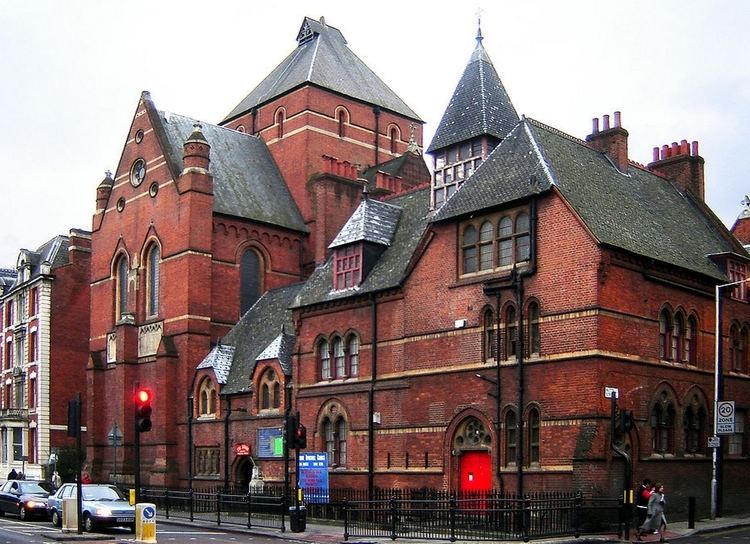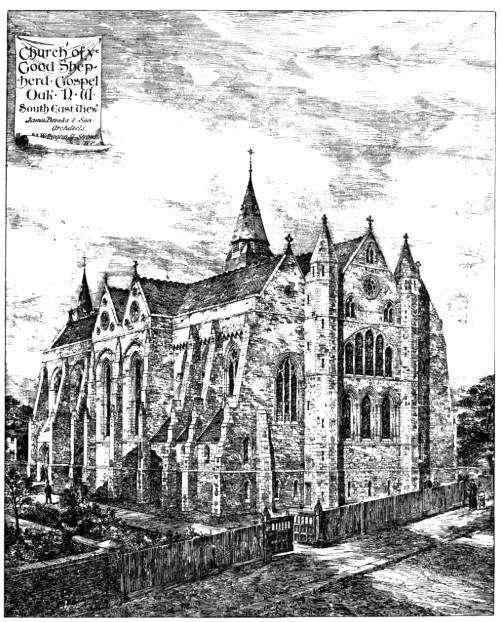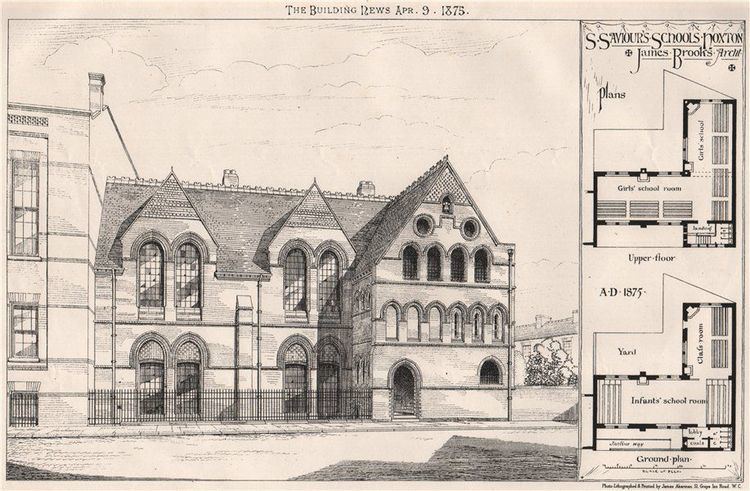Name James Brooks Role Architect | Died 1901 | |
 | ||
Structures | ||
James Brooks (1825–1901) was an English Gothic Revival architect.
Contents

Life

Brooks was born near Wantage, Berkshire, in 1825. In about 1847 he was articled to the London architect Lewis Stride. He attended Thomas Leverton Donaldson's lectures at University College, London, and enrolled as a student at the Royal, Academy Schools. He set up in practice in about 1852,
He was architect to the Diocesan Society of Canterbury, and a consulting architect to the Incorporated Society for Building Churches. He became a fellow of the Royal Society of British Architects in 1866, and was its vice-president from 1892–96. He received its Royal Gold Medal in 1895.
He exhibited at the Royal Academy between 1853 and 1899; from 1894 as "James Brooks and Sons". His address is given in the Academy catalogues as 6 Bloomsbury Street between 1853 and 1862; 11, Serle Street, Lincoln's Inn, between 1871 and 1875, and 35 Wellington Street, Strand from 1876. He lived, however, for much of this time at The Grange in Stoke Newington (now numbered 42, Clissold Crescent), a red-brick house built to his own design in 1862.
Arthur Heygate Mackmurdo was his pupil
East London churches
Brooks attracted attention early in his career for several large brick-built churches in East London: St. Michael and All Angels, Shoreditch, St Saviour, Hoxton, St. Columba, Haggerston and St. Chad, Haggerston
The last two churches were built as part of the Haggerston Church scheme, which had been set up in 1860, on the initiative of the vicar of St Mary's, the parish church. St Mary's had been designed John Nash in the Gothic style of his time. The first initiative of the scheme was create a chancel and sanctuary of the kind held to be suitable for modern high church ideas of religious ritual. Brooks was brought in to do the work and, according to T. Francis Bumpus, "the boldness with which he grappled with such a monster as Nash's structure won him much praise. It was one of his earliest works, and its cleverness and originality brought him into public notice."
Money was then raised for new churches, and four new parishes were created in Haggerston, and provided with temporary buildings three of which were soon superseded by permanent buildings, dedicated to three British missionary saints: Augustine, Chad and Columba, and completed by the summer of 1869. Brooks designed the last two.
The East London churches were intended for mission work in poor, crowded areas, and built on restricted budgets. The Church Builder said of them
They are spacious in plan, affording ample accommodation for the estimated congregations, and an almost lavish supply of room besides in unseated aisles and transepts. They are all also of unusual height. Their effect is obtained partly by this spaciousness and height, partly by the fine proportions of all the parts, partly by a bold, severe dignity in the style of design.
They were characterised by their broad naves with narrow aisles; transepts which projected hardly, if at all beyond the aisle walls, and brick vaulted chancels with north and south aisles. The exteriors were plain and unbuttressed, in red brick with stone sparingly used for window dressings and plate tracery, and for occasional bands of relief. Another East London church, St Andrew, Plaistow, was similar in conception, but faced in stone.
Brooks tended to use stilted arches, and employed a distinctive type of lierne vault in his chancel, in which the vaults themselves were brick and the ribs stone.
Secular architecture
Once he had established his reputation as an ecclesiastical architect he built few secular works. An exception was the South Eastern Hotel at Deal in Kent (1894), an asymmetric Renaissance Dutch-style building, in red brick with stone dressings. He showed drawings for the hotel at the Royal Academy in 1893.
